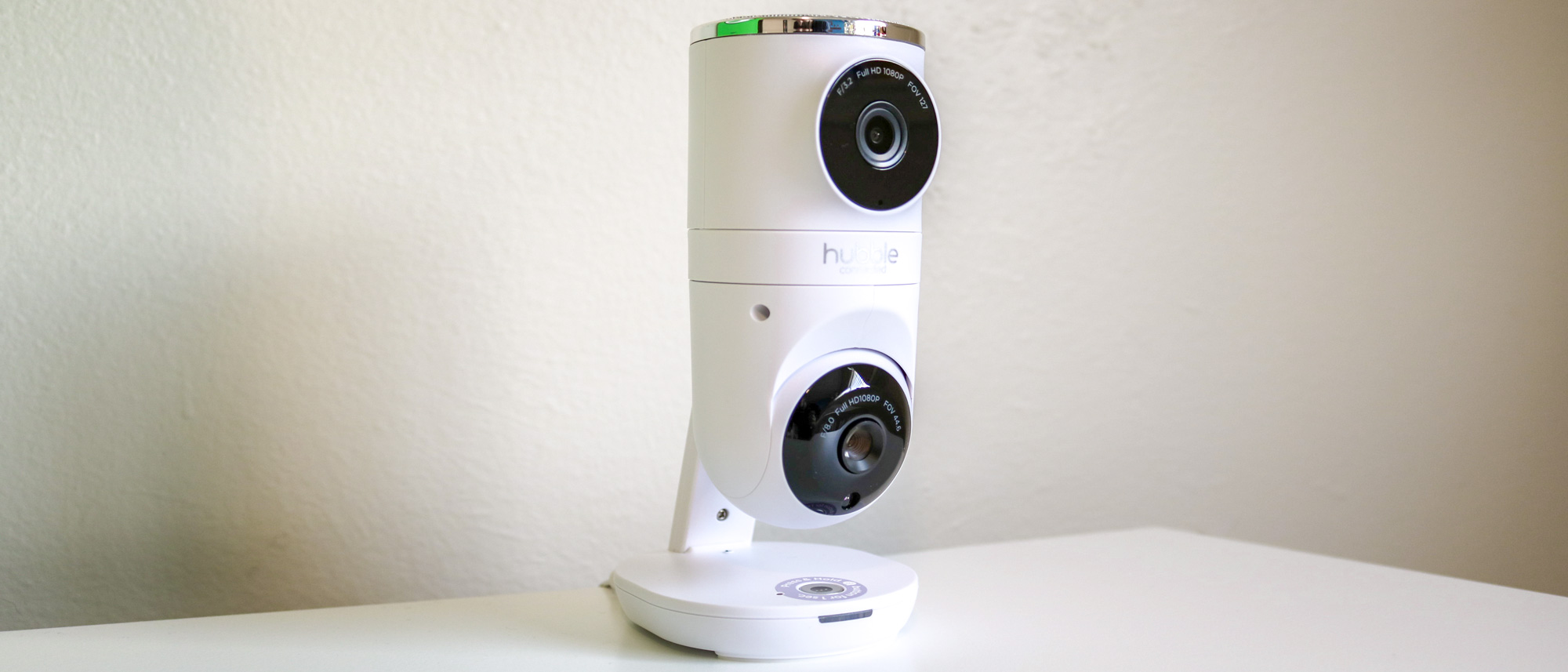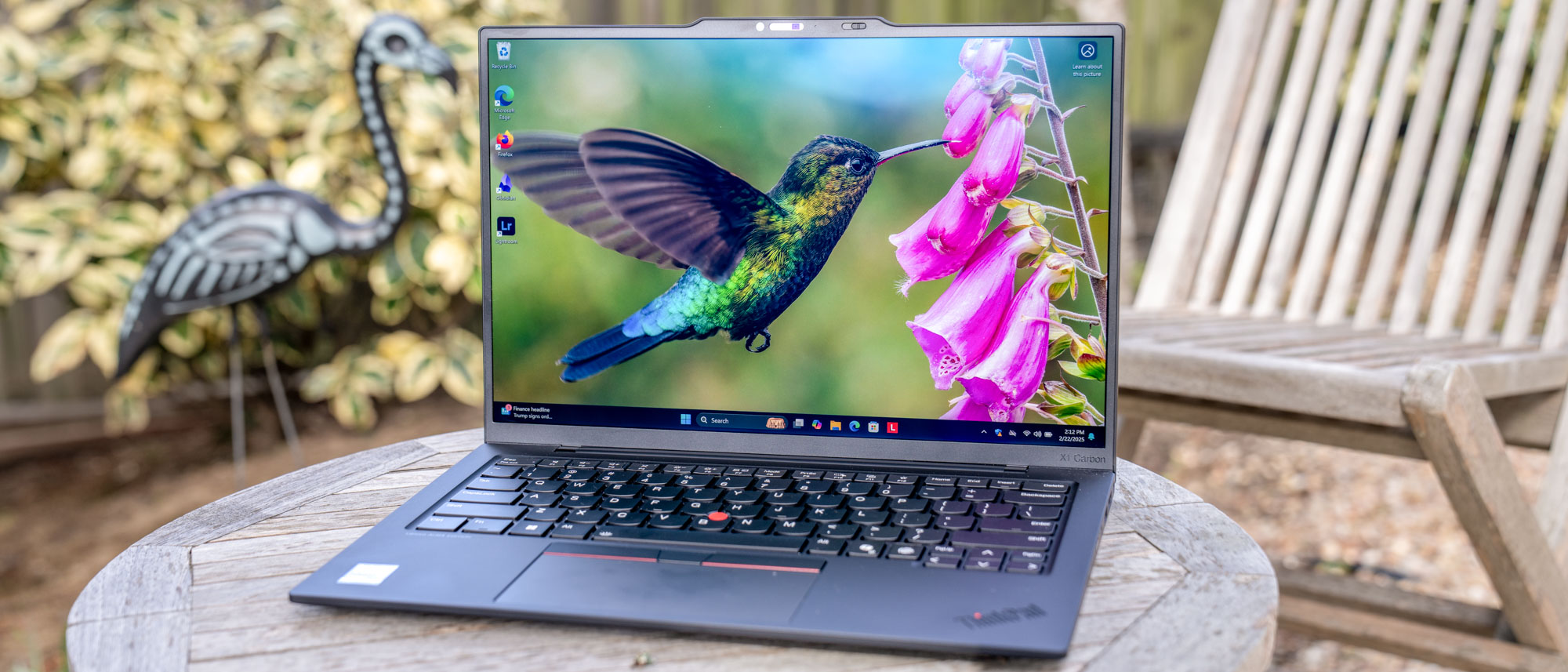Tom's Guide Verdict
The Hubble Nursery Pal Dual Vision gives you not one but two cameras to keep an eye on your little one. This lets you know what’s going on in their room and not just their crib. The included baby monitor lets you check on your child without an internet connection but there’s also an app if you prefer using your smartphone to do so. Hubble really wants you to sign up for a premium subscription with multiple prompts throughout its HubbleConnected app. Still, it’s a great baby monitor if you want a complete view of your child’s nursery.
Pros
- +
Dual cameras
- +
Wall mount adapter included
- +
2.4 GHz or Wi-Fi connectivity
- +
Split screen mode on handheld monitor
- +
Pre-loaded nature sounds, lullabies and audiobooks
Cons
- -
Placement can be tricky
- -
Push-to-talk button seems unnecessary
Why you can trust Tom's Guide
Dimensions: 10.12 x 8.39 x 5.16 inches
Weight: 1.02 pounds
Cameras: f/3.2 Full HD 1080P, FOV 127 (top camera), 4/8.0 Full HD 1080P, FOV 44.6 (bottom camera)
Temperature and humidity sensor: Yes/No
Monitor range: up to 1000 feet
Monitor battery: 2100mAH
Security: AES-128 encryption (client to client), AES-256 encryption (cloud), ISO/IEC 27001:2013, MFA
Power: 100-240 AC, 50/60Hz, 300mA
Network: 2.4 GHz Wi-Fi band
Mobile device: iOS 12 or higher, Android 8.0 or higher
Choosing where to place your baby monitor can be difficult, especially for a new parent. While you can mount it above your child’s crib for a bird’s eye view, you won’t be able to see what’s happening in the other parts of their room. Likewise, it can be hard to pick between a handheld baby monitor or an app for keeping an eye on your little one from afar. Fortunately, the Nursery Pal Dual Vision baby monitor from Hubble addresses all of these concerns.
As the name suggests, the Nursery Pal Dual Vision has not one but two cameras designed to provide you with a complete view of your child’s nursery. While the camera on top lets you see their entire room, the one on the bottom gives you a close-up view of your child’s crib. Our Hubble Nursery Pal Dual Vision review will help you decide if this is the best baby monitor for your needs or if you’d be better off with a different device to check in on your sleeping child.
Hubble Nursery Pal Dual Vision review: Price, availability and what’s included
The Nursery Pal Dual Vision is available on both Hubble’s site and on Amazon for $229. This price is in line with the company’s other products and if you don’t necessarily need dual cameras to keep an eye on your little one, the Nursery Pal Deluxe is $30 cheaper and comes with a more modern touch screen monitor.
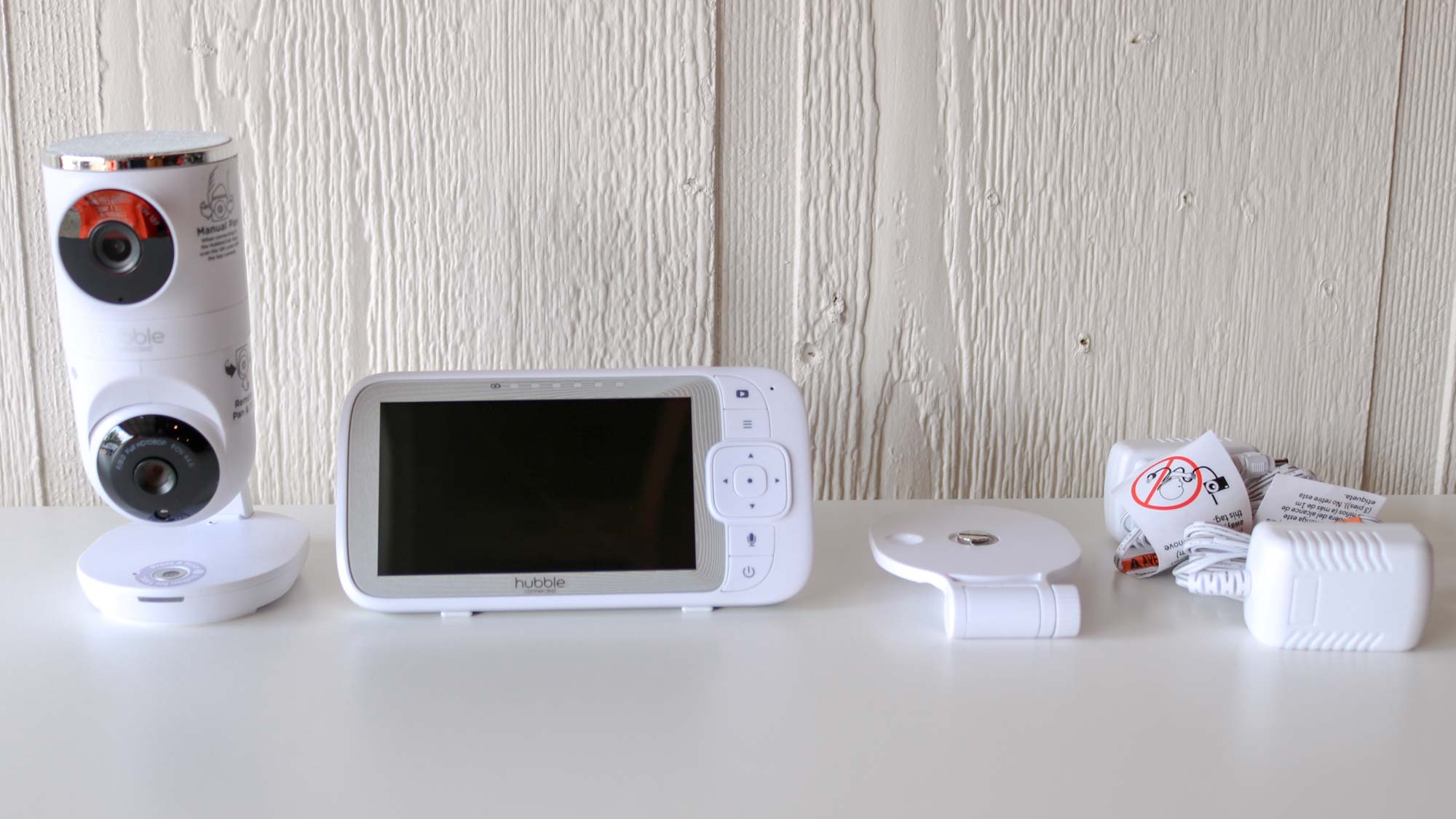
The Nursery Pal Dual Vision set includes the baby monitor itself along with a 5-inch, handheld monitor. Unlike with the Pixsee Smart Baby Monitor though, Hubble includes a universal wall mount adapter to attach it to your wall. You also get two power adapters with barrel connectors for powering the camera and charging the handheld monitor.
Hubble Nursery Pal Dual Vision review: Design
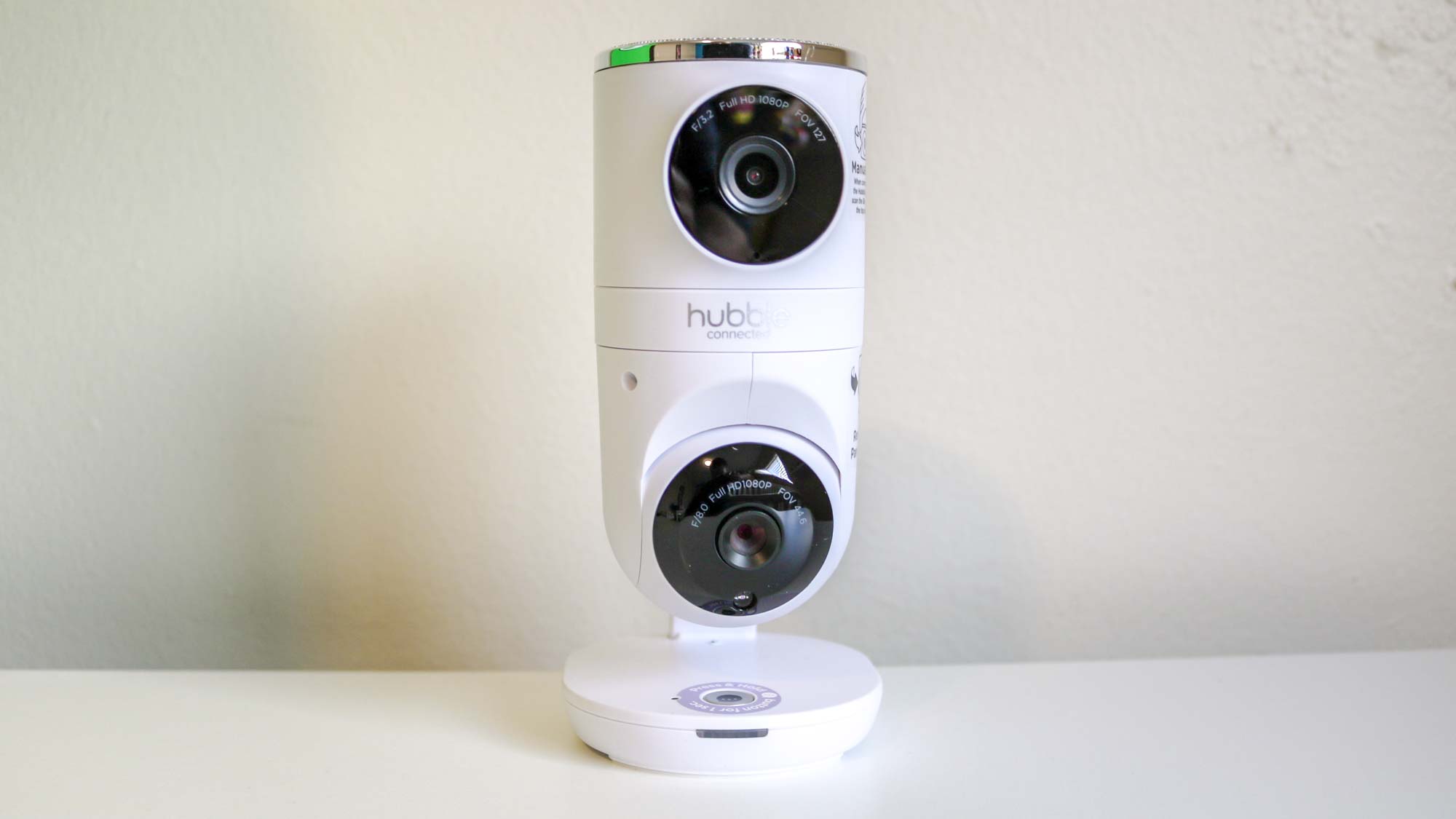
The dual camera design immediately sets Hubble’s Nursery Pal Dual Vision apart from other baby monitors. While the top camera provides a wide-angle view of a child’s entire room, the bottom camera offers a more close up view of their crib. Both cameras are 1080p and capture Full HD video. However, the top camera only has manual pan while the bottom one has remote pan, tilt and zoom. There’s also an HD speaker at the top of the Nursery Pal Dual Vision and a Push-to-Talk button as well as an LED light under the bottom speaker.
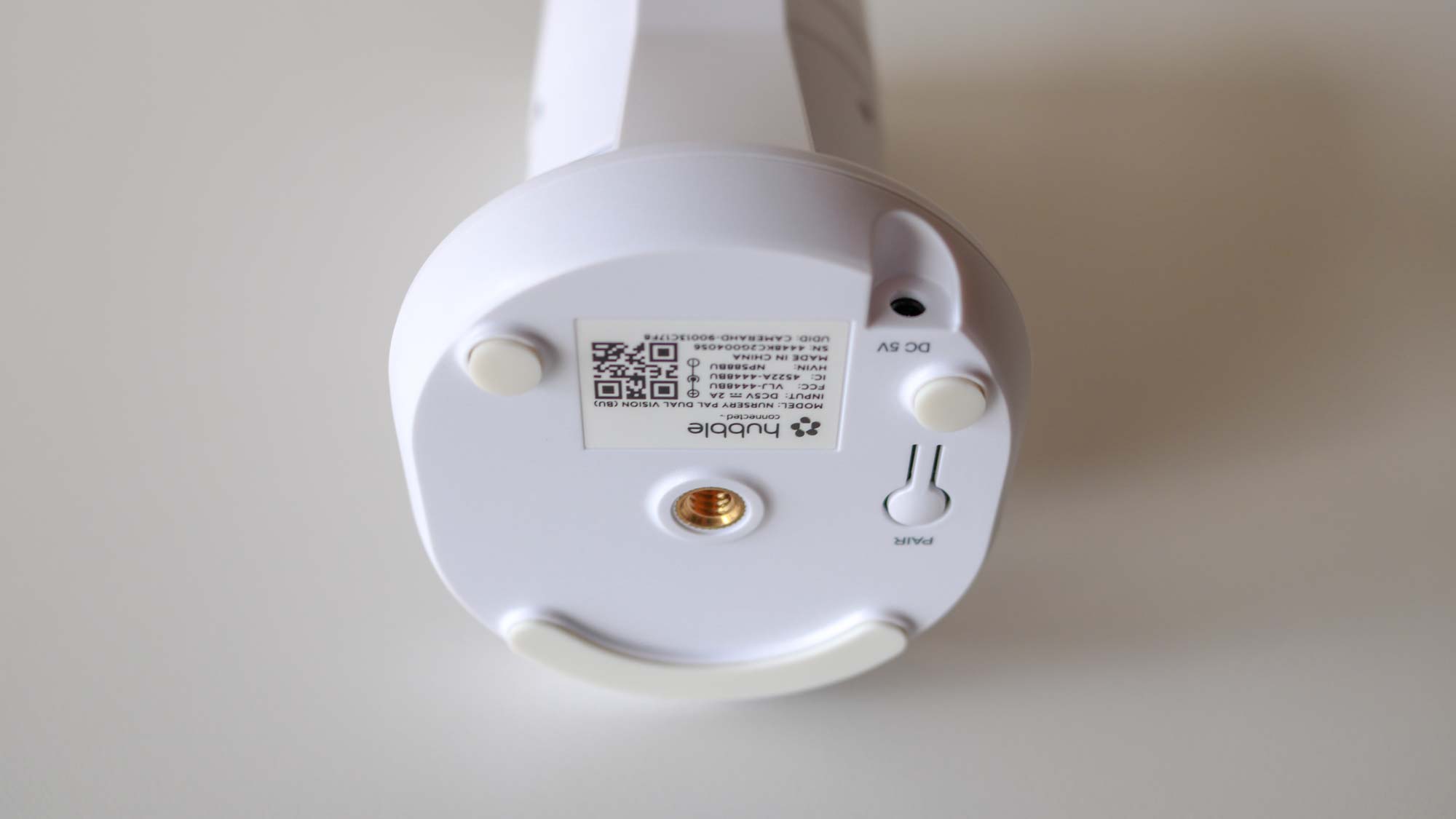
At the base of the Nursery Pal Dual Vision, you’ll find a DC 5V port for power, a pairing button and a tripod mount hole for attaching the unit to the included universal wall mount adapter.
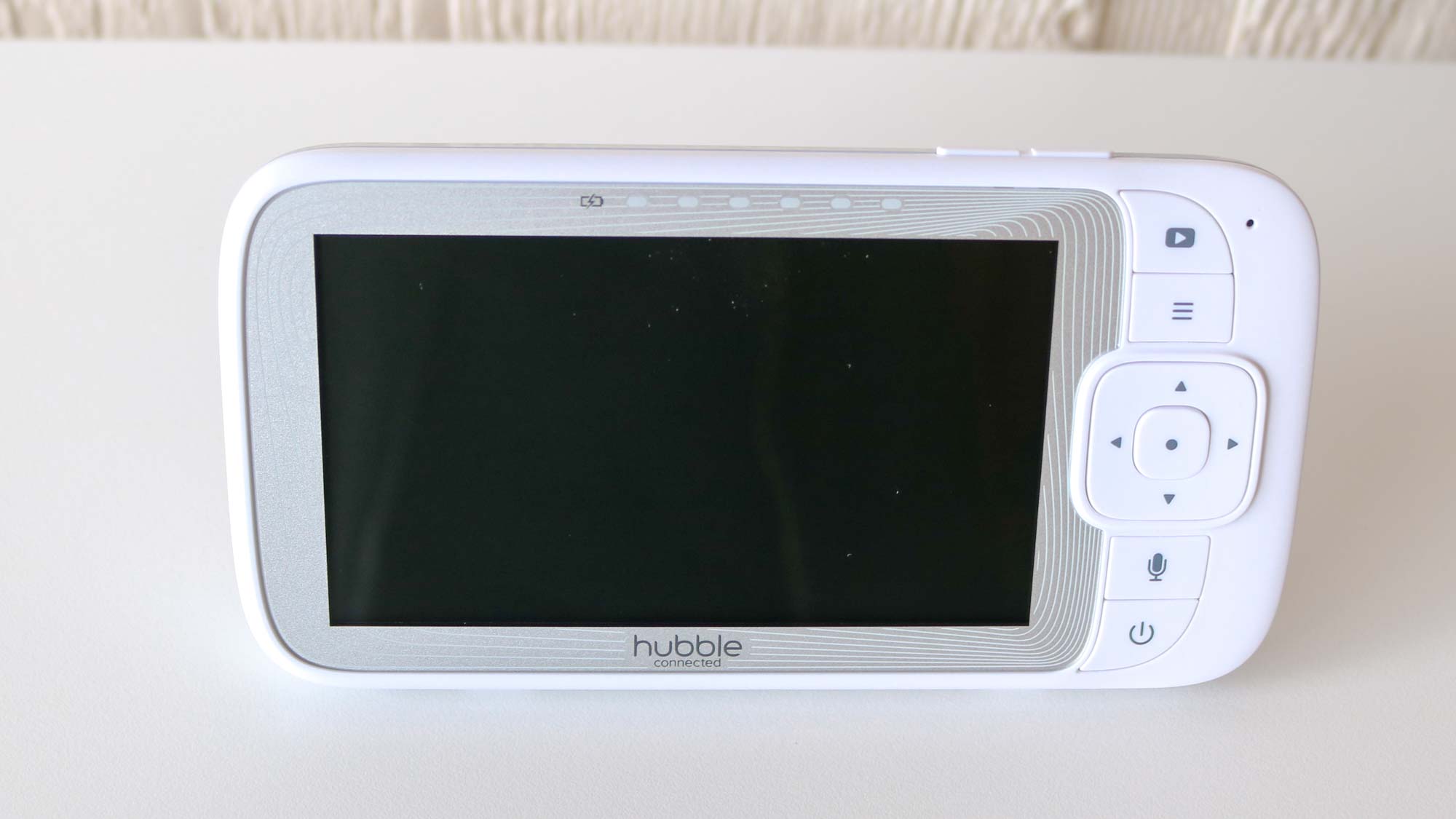
The Nursery Pal Dual Vision also comes with a 5-inch handheld monitor that communicates with the baby monitor using a 2.4 GHz FHSS wireless connection. On the right side of the unit from top to bottom is a Video On/Off button, a Menu button, four directional navigation buttons with an Ok button in the center, a Talk button and a Power button.
Above the screen there are six LED lights. The first two indicate whether the handheld monitor is turned on or charging while the four LEDs on the right are actually used to indicate the current audio level in your child’s room. If the first of these LED lights is green, everything is fine while the last one lighting up red indicates that your child is crying.

At the back of the handheld monitor, there’s a kickstand, a speaker, a fold out antenna to increase the device’s range, a 5V barrel port for charging the unit as well as a small, recessed reset button.
Hubble Nursery Pal Dual Vision review: Setup and installation
Getting the Nursery Pal Dual Vision set up and ready to use is really easy as the handheld monitor comes pre-paired to the baby monitor. However, Hubble does recommend charging the handheld monitor for at least four hours before using it without the power adapter.
Once I plugged in both the baby monitor and handheld monitor, the Nursery Pal Dual Vision turned on immediately and I could see a live feed from its cameras on the monitor.
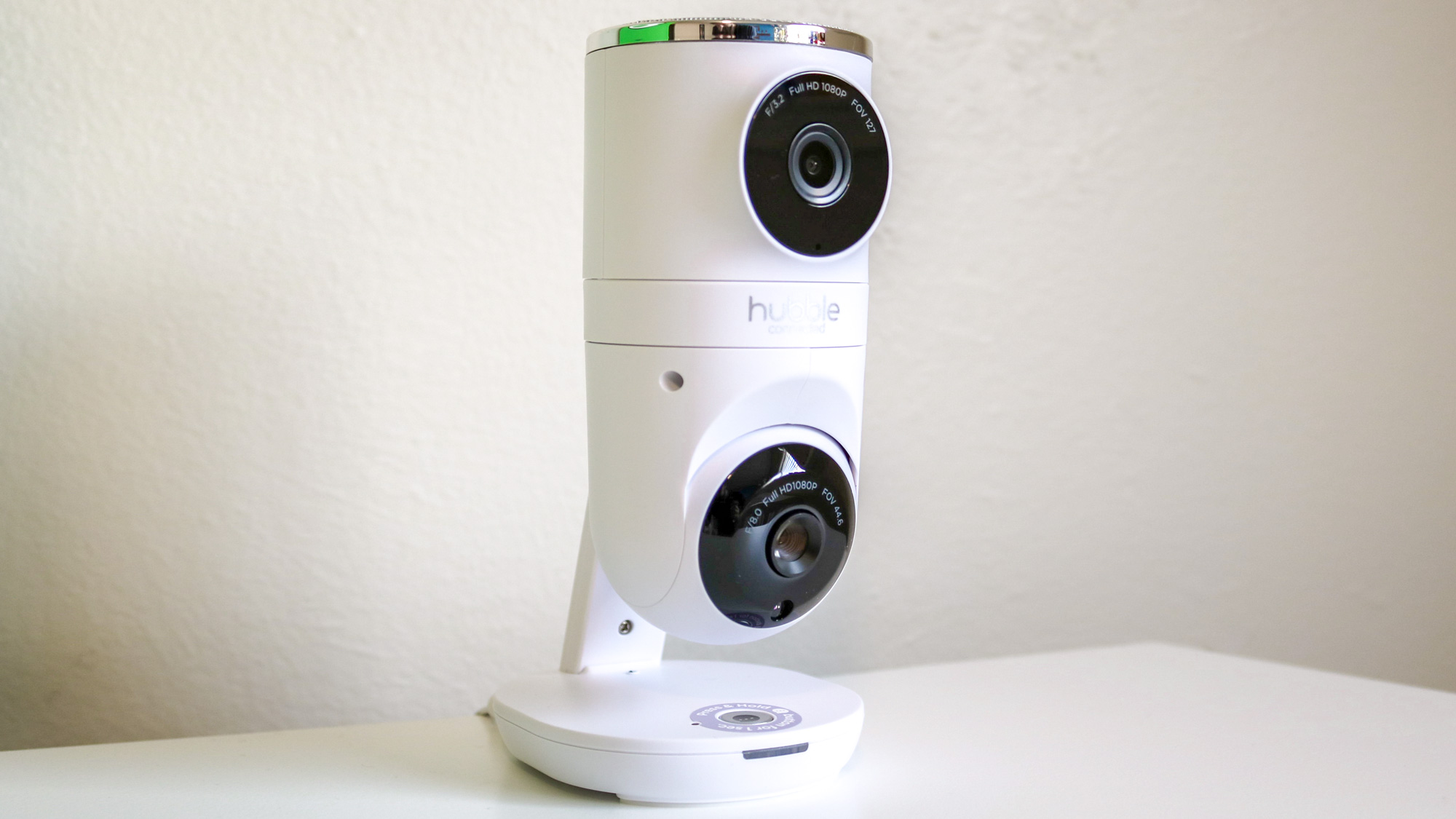
I initially set up the device on a bookshelf next to my son’s crib. However, while I was able to get a clear view of the crib using the bottom camera, the wide-angle view from the top camera was wasted in this position. If you’re considering this baby monitor for its unique dual-camera design, I highly suggest wall-mounting it in order to make full use of its capabilities.
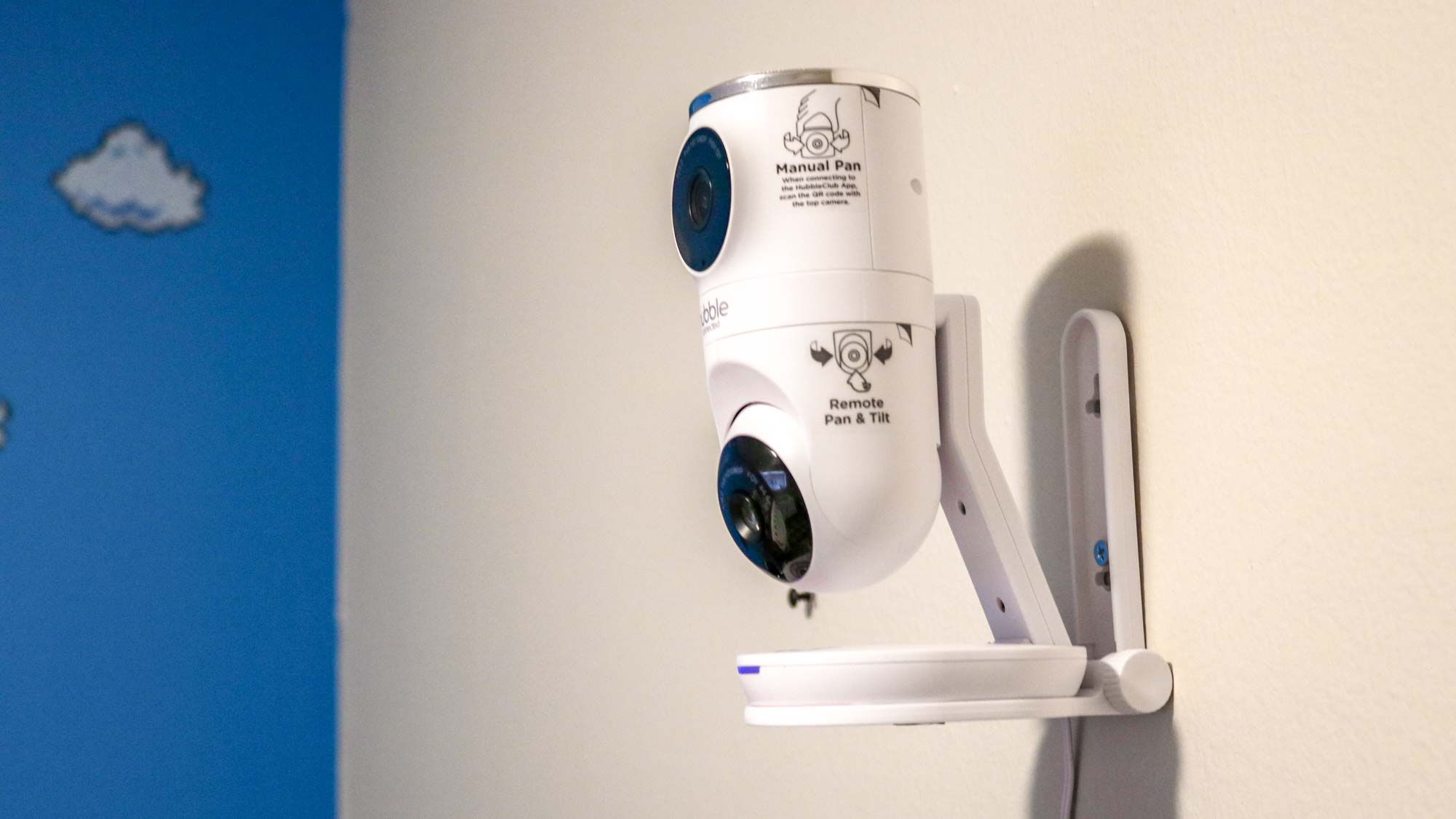
After my initial setup didn’t work the way I intended, I got some wall anchors and screws and attached the universal wall mount to the wall directly across from my son’s crib. Not only was the wall mount easy to install, it’s also adjustable just in case you make a mistake and put your screws too high or too low. A knob on the right side of the mount allows you to adjust the angle of the platform the baby monitor is attached to.
Since the Nursery Pal Dual Vision supports Wi-Fi, you can also use Hubble’s HubbleClub app on iOS or Android to view live feeds from either camera on your smartphone.

Adding a camera to the app was easy enough and involved adding it to my Wi-Fi network and scanning a QR code from my smartphone. However, I was surprised to find that I had to repeat the process to set up the Nursery Pal Dual Vision’s Wellness features which include tracking for sleep, growth, feeding and even diaper changes.
Hubble Nursery Pal Dual Vision review: In use
After spending the last few months using the Hubble Nursery Pal Dual Vision, I can safely say it provides an easy and convenient way to check in on my sleeping child. The dual cameras give me a complete picture of his room at night and unlike with other baby monitors, I wasn’t left guessing as to whether or not he was okay.
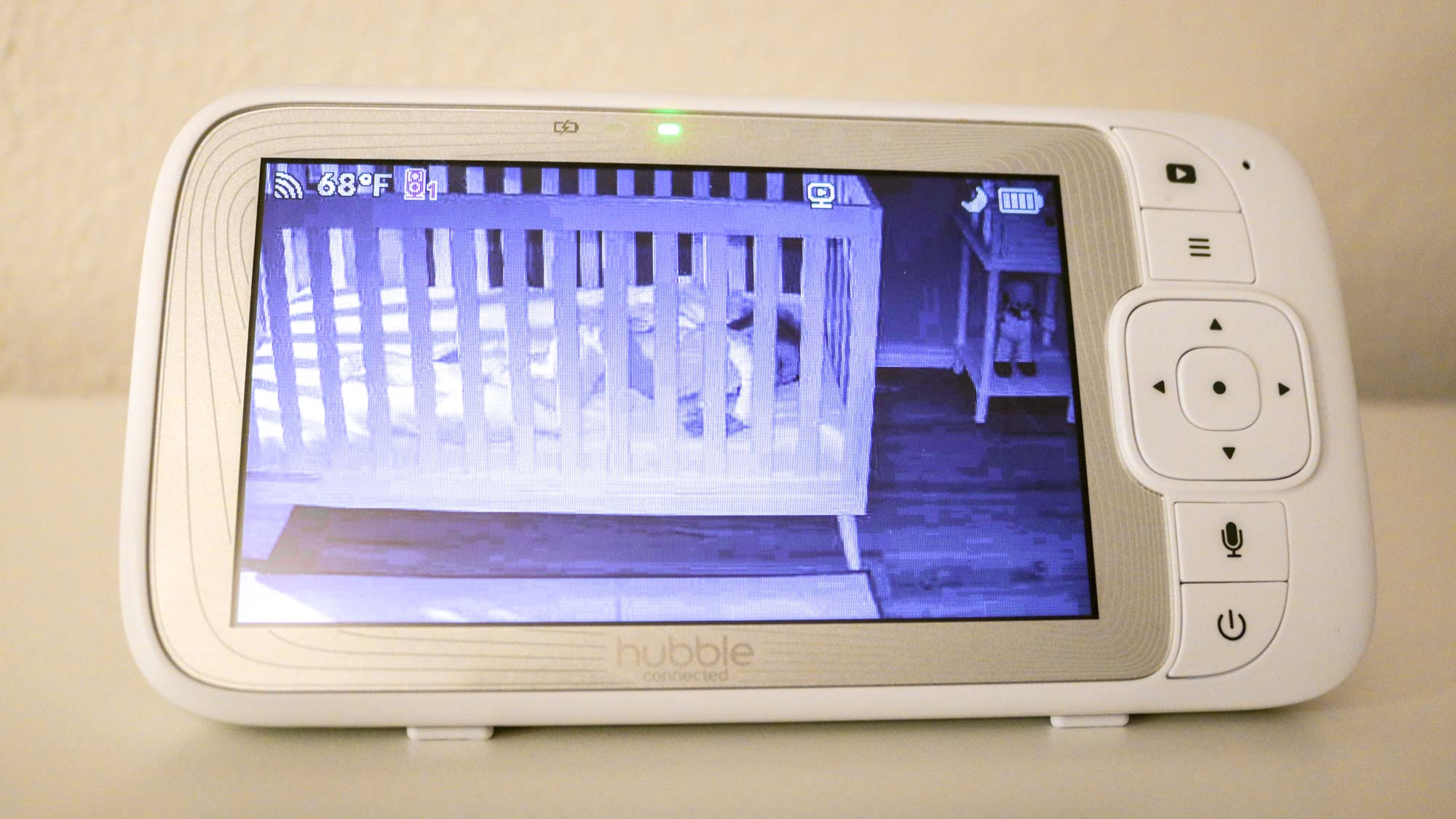
Although I’ve primarily used baby monitors with a smartphone app, I was pleasantly surprised by Hubble’s handheld monitor. The large buttons were easy to press and there weren’t any connection problems when using the monitor throughout my 2,200 square foot home. I especially liked how the LEDs at the top of the monitor would light up like a rainbow depending on the noise level in my son’s room.
The handheld monitor’s 2,100 mAh rechargeable battery lasts up to 4 hours on a single charge and pressing the play button at the top allows you to turn its LCD screen on or off to conserve battery. There’s also a battery indicator light at the top that turns red when a recharge is needed.
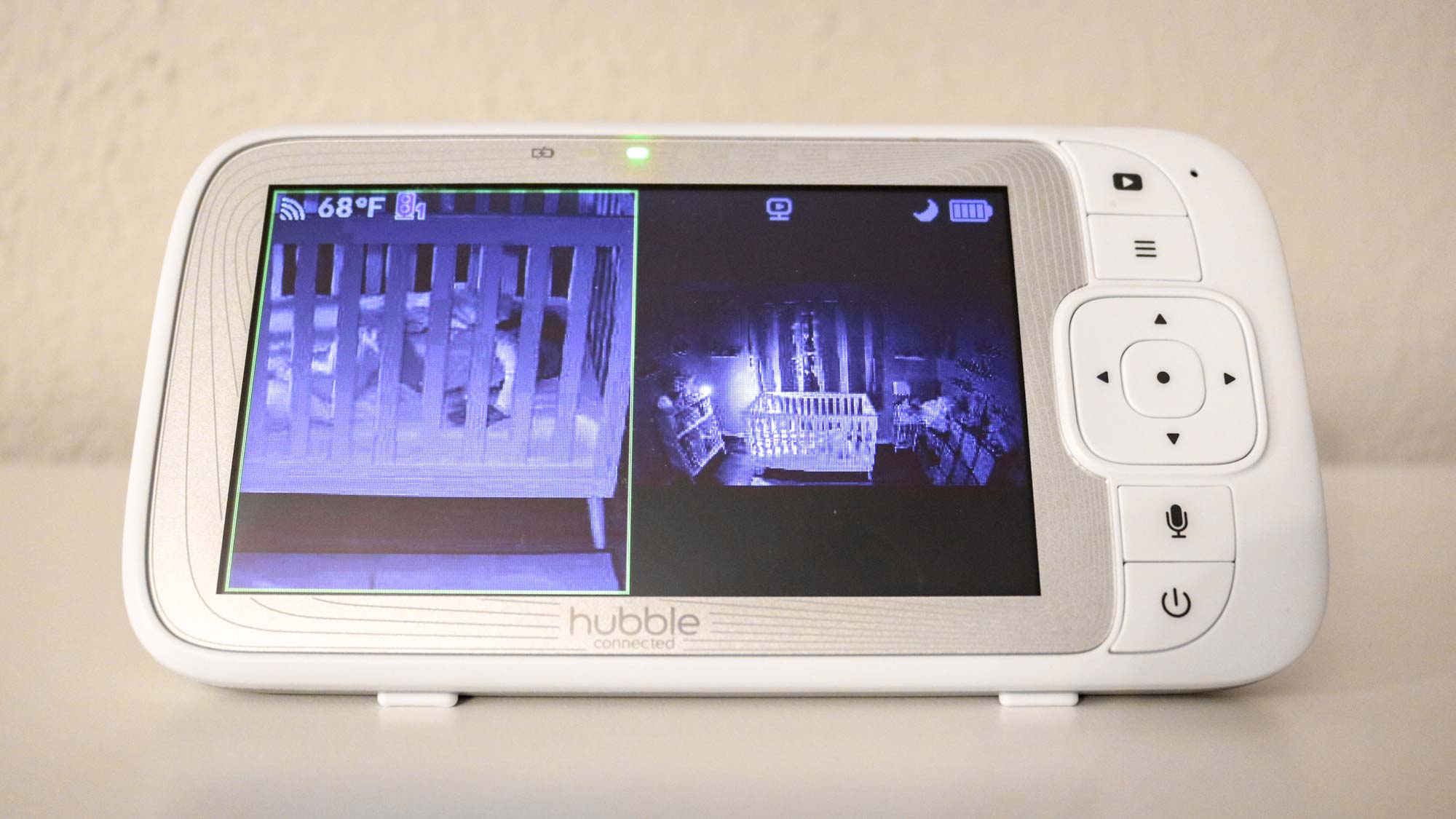
Another great thing about the handheld monitor is that it allows you to view either the top or bottom camera individually or both at the same time in a split-screen view. You can also pick whether you want the bottom or top cameras on the left or right side of the screen.
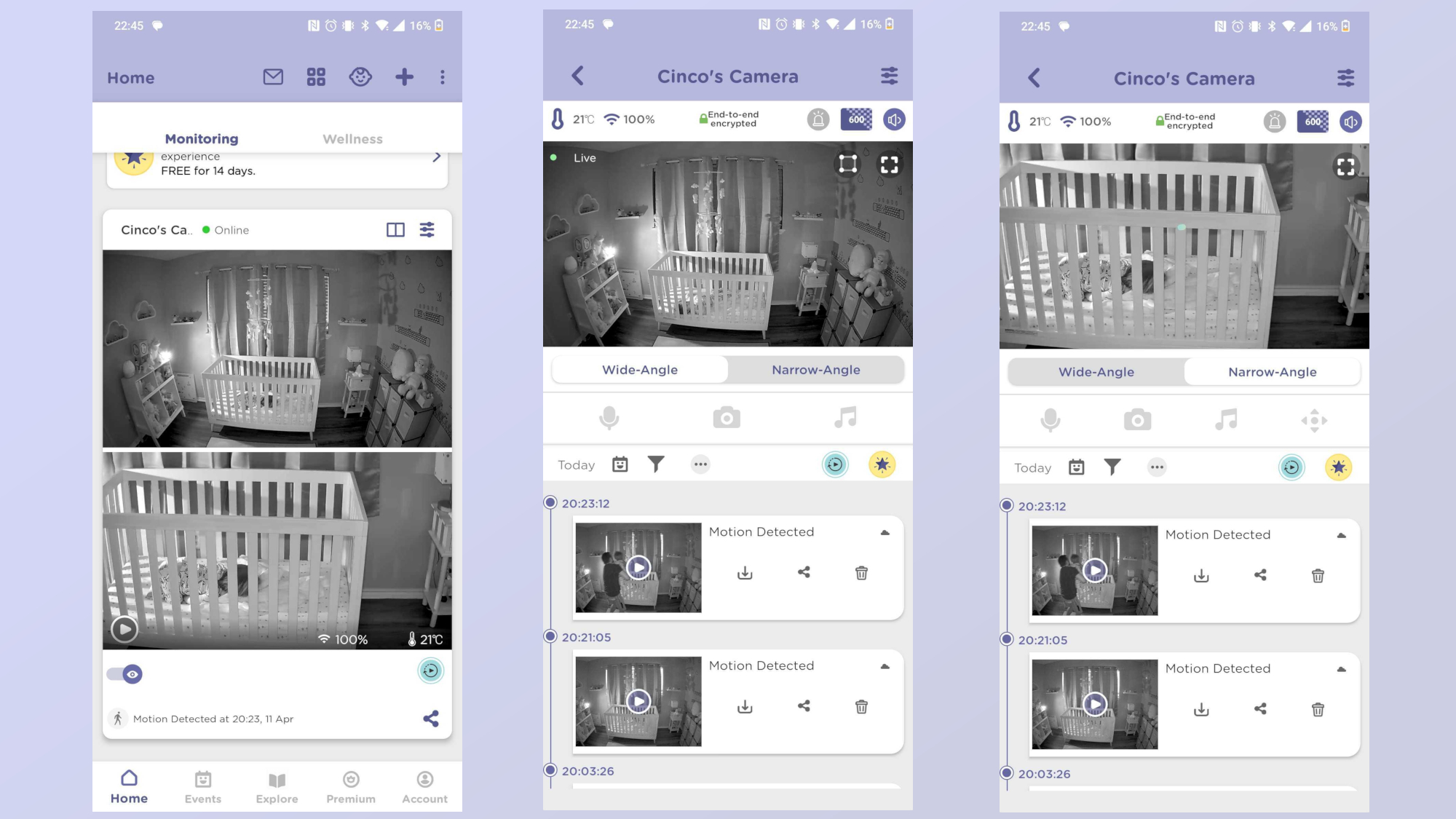
While my wife used the handheld monitor to check in our son, I primarily used Hubble’s HubbleClub app during my testing. Its Home screen shows both cameras on top of one another along with the room’s current temperature and how strong the baby monitor’s Wi-Fi signal is. Tapping on one of the live feeds gives you a close up view of that camera along with a timeline of recently captured events. A toggle under the feed allows you to switch between cameras. While the wide-angle camera only has a microphone, camera and music icon, the narrow-angle camera has a control icon as well to adjust the camera from the app.
Adjusting the narrow-angle camera either through the app or with the handheld monitor can be a bit finicky though, as there’s a slight delay between taps and the camera actually moving. This takes some time to get used to as it isn’t as responsive as one of the best home security cameras. Patience is the name of the game here.
Hubble Nursery Pal Dual Vision review: App and smart features
The HubbleClub app provides parents with another way to check in other little ones on either Android or iPhone. While the app itself is free, there’s quite a lot of upselling to encourage users to upgrade to a paid HubbleClub Premium subscription — more on that later.
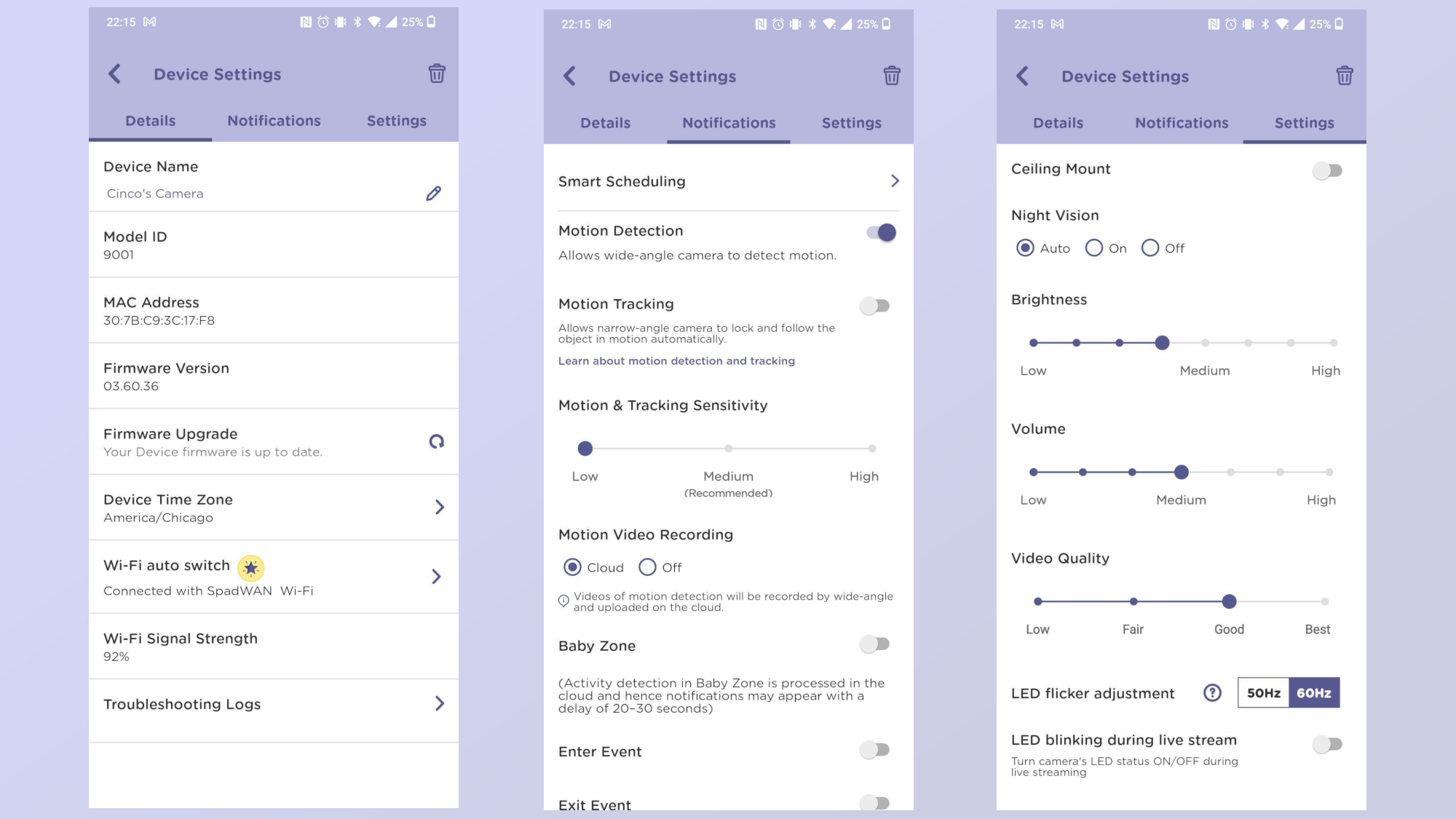
Tapping on the toggle icon above the camera feeds in the app’s Home tab lets you dig into the device settings of the Hubble Nursery Pal Dual Vision. You can update the firmware, set your time zone and see the signal strength from your Wi-Fi router in the Details tab. The Notifications tab lets you raise or lower how frequently you receive alerts from your baby monitor in the app and the Settings tab allows you to turn on or disable Night Vision, adjust the Brightness, Volume, Video Quality and more. There’s quite a lot of things to tweak to make the Hubble Nursery Pal Dual Vision work exactly the way you want.
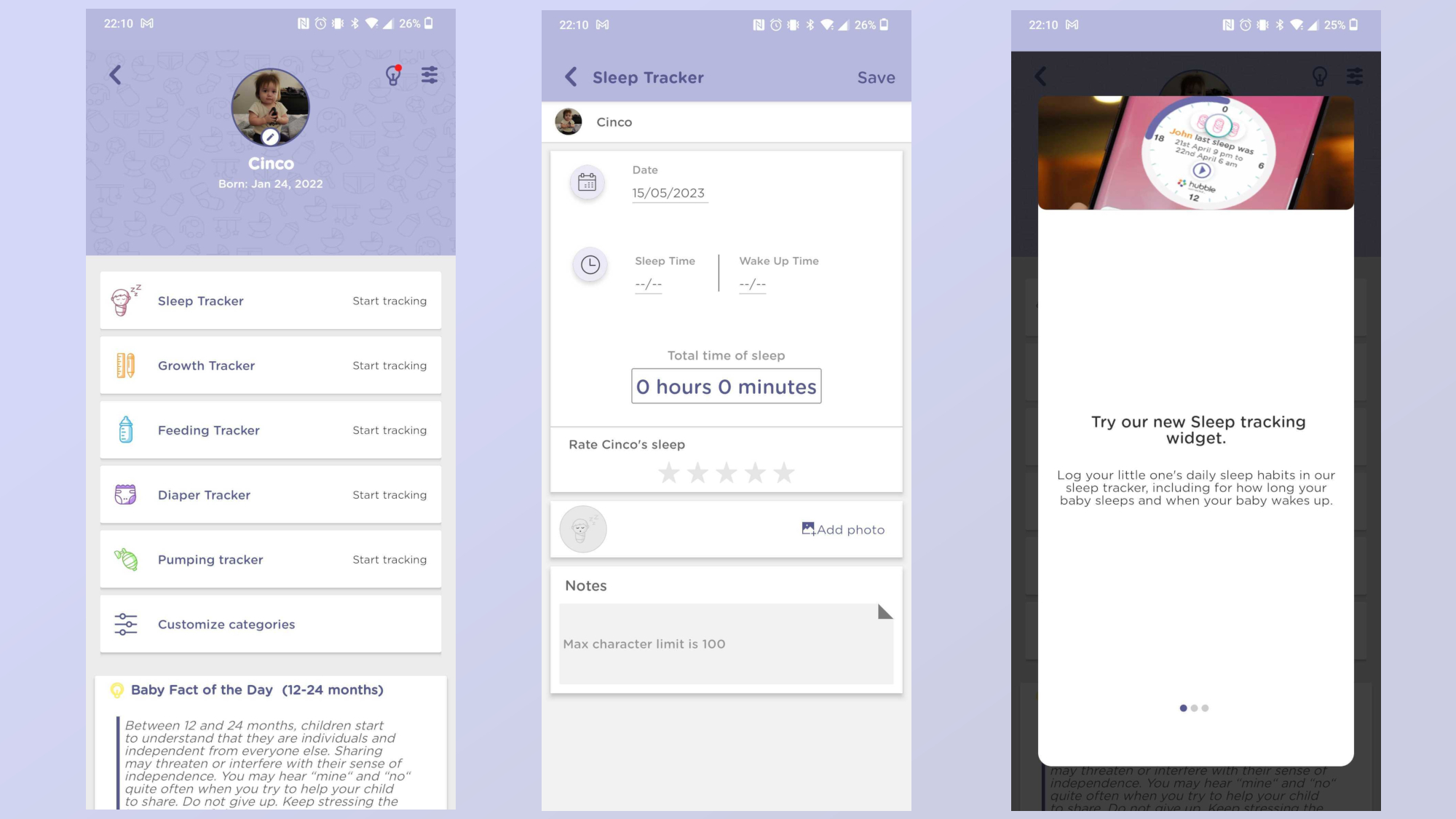
When it comes to tracking your baby’s sleep, growth, feeding and diaper usage, the HubbleClub app takes a more manual approach. On the app’s Home tab, you can tab on the baby icon at the top to manually input all of this information but there’s also a widget so that you can do it right from your phone’s home screen.
As for smart features, the Hubble Nursery Pal Dual Vision and the company’s other baby monitors work with both Alexa and Google Assistant. However, you can’t ask either virtual assistant to show live feeds from its cameras on one of the best smart displays. Instead, you can use either virtual assistant to do your tracking for you so that you don’t have to do it manually.
Hubble Nursery Pal Dual Vision review: Subscription costs
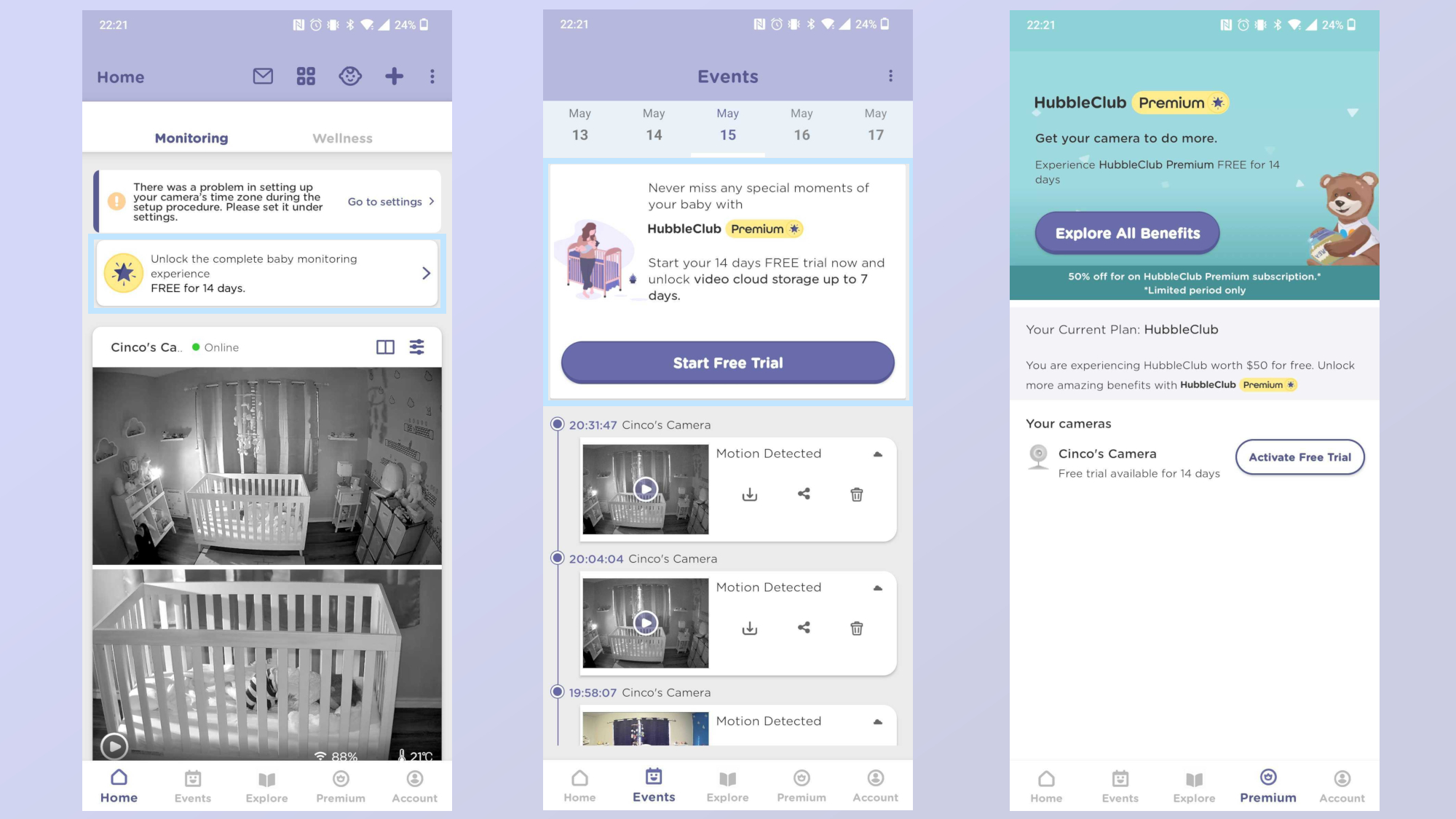
While the HubbleClub app makes it easy to check in on your sleeping child, there’s quite a lot of upselling throughout the entire app. For instance, there’s a banner notification about signing up for a free trial on the top of the Home tab that can’t be cleared as well as one at the top of the Events tab. Hubble Connected does offer a 14-day free trial but after that, it’s $5.99 a month for the Lite plan, $9.99 for the Essentials plan and $14.99 for the Select plan. This gives you cloud storage for saved videos for 7 days and is required if you want to use the Hubble nursery Pal Dual Vision on more than one Wi-Fi network without having to set it up from scratch. A subscription is also required to use Hubble Connected’s web portal to view your baby monitor from a computer.
Hubble Nursery Pal Dual Vision review: Camera and audio quality
The cameras on the Hubble Nursery Pal Dual Vision provide you with a clear close-up shot of your child’s crib or a wide-angle view of their entire room. Although both cameras are full HD (1080p), the handheld monitor is only HD (720p) which means in order to get the best picture quality, you’re going to want to use the HubbleConnected app instead. Still, the handheld monitor is more than good enough for quickly checking in on your child.
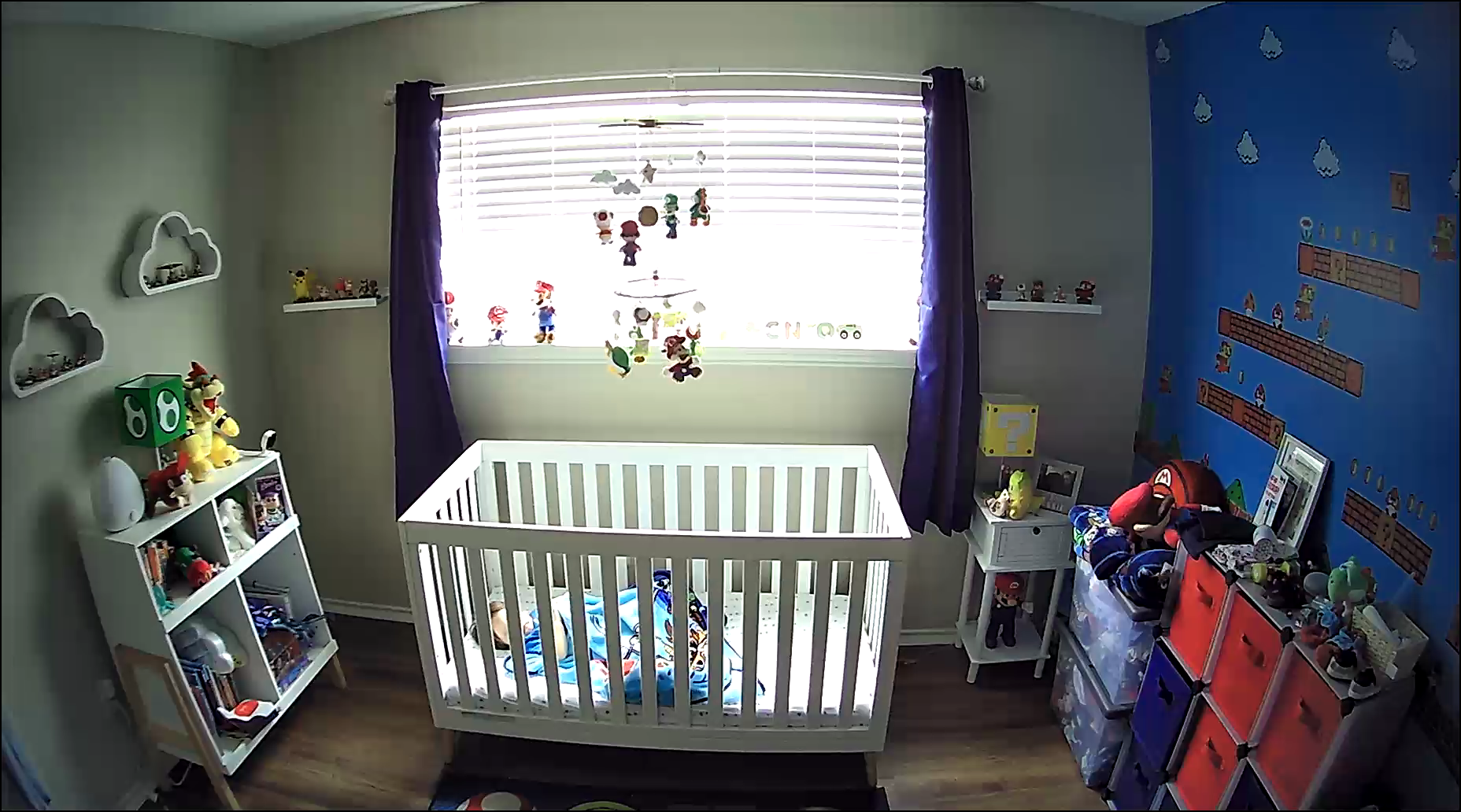
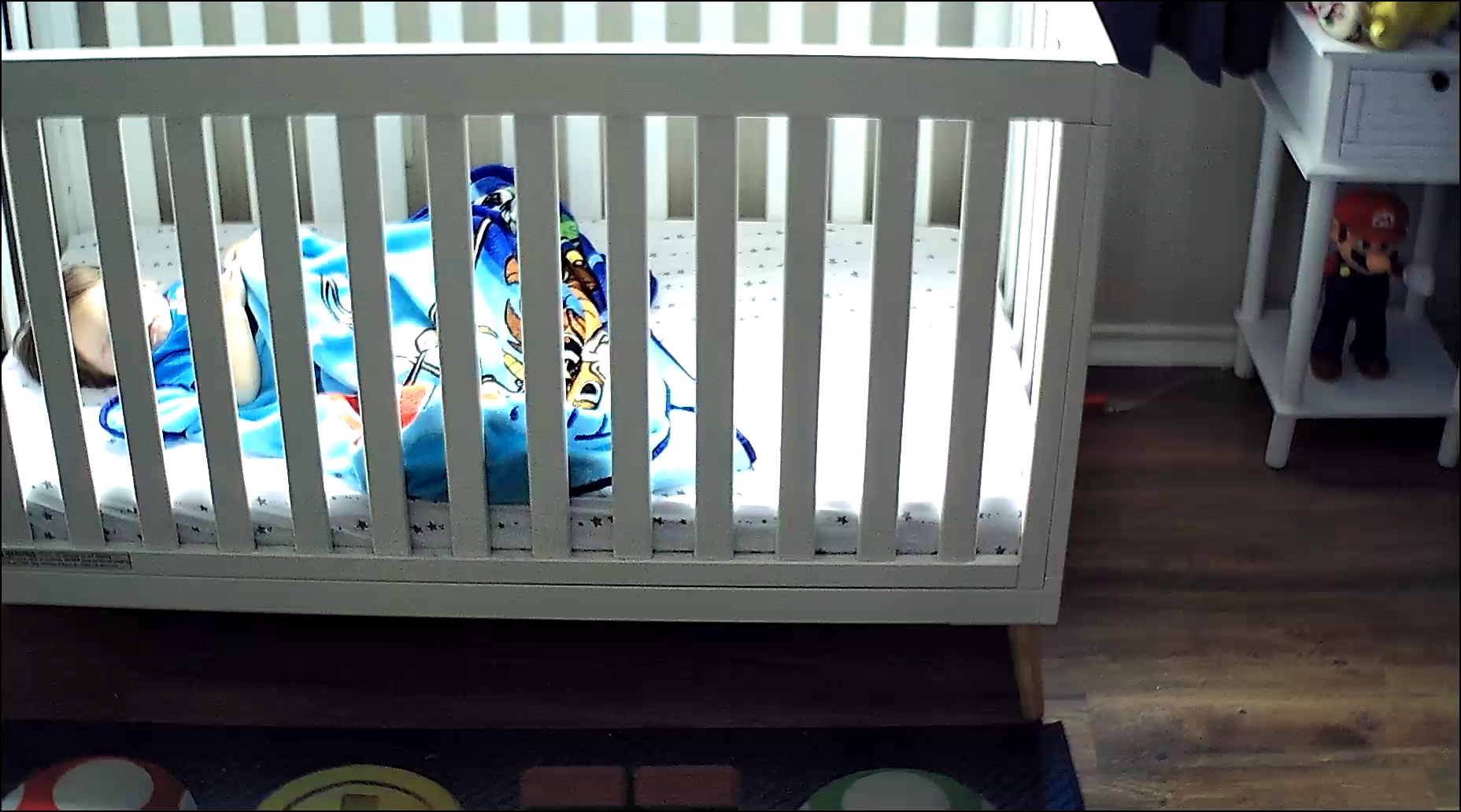
During the daytime, you get a bright, clear view of your child; it was easy to spot smaller details like the “M” on Mario’s hat in the right side of this shot using the overhead camera. The lower camera is zoomed in a bit more, which makes details harder to make out but you can still easily see if your child is okay.
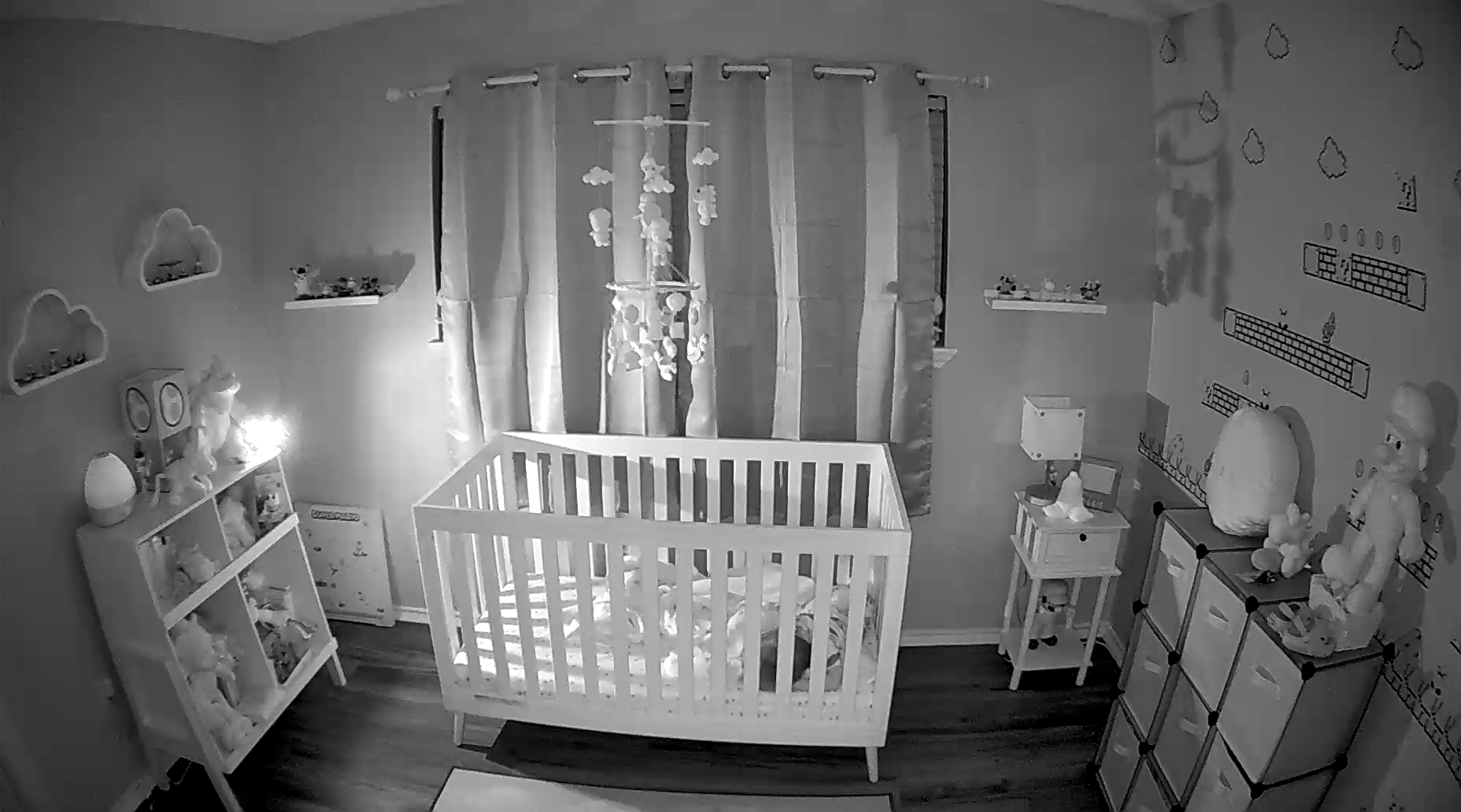
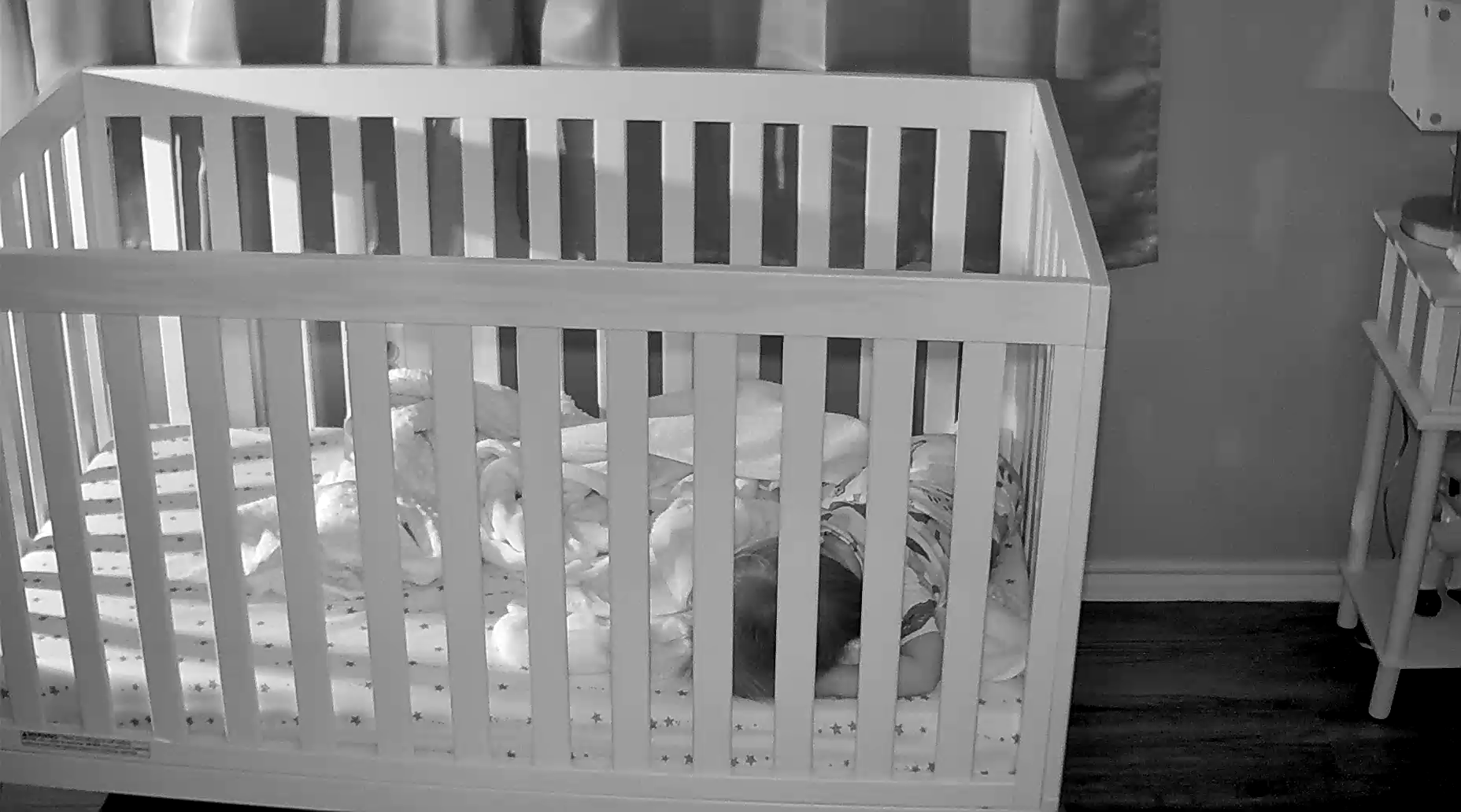
The Hubble Nursery Pal Dual Vision has built-in night vision that allows you to check in on your child at night. This black and white view makes it difficult to make out colors but the image quality is more than enough to check in on your child.
As for the audio quality of the Nursery Pal Dual Vision, the high-sensitivity microphone allows you to hear if your child is crying or moving around in their crib but snoring and quieter sounds weren’t picked up by the monitor during my testing. However, I did get notifications about sounds being detected from the Nursery Pal Dual Vision when my son wandered into his room throughout the day.
Hubble Nursery Pal Dual Vision review: Bottom line
The Hubble Nursery Pal Dual Vision is an excellent baby monitor for parents that want a complete view of their child’s crib as well as their room. Setup was fairly simple and having two cameras in one place beats having multiple monitors throughout your nursery. Still though, you need to be quite mindful when mounting the camera in order to be able to make use of both the top and bottom cameras.
The included handheld monitor was also very easy to use and I appreciate the fact that it has a range of up to 1,000 feet. The lights at the top provide you with visual feedback regarding the noise in your child’s room while the kickstand at the back makes it easy to set up the device on a coffee table or at your desk. In contrast, I found the HubbleConnected app to be useful but I wish it wasn’t always trying to get me to upgrade to a premium subscription.
The Hubble Nursery Pal Dual Vision solves one of the biggest problems new parents might have by allowing them to see their entire nursery either on their smartphone or using the handheld monitor. While I wish the tracking was handled automatically instead of manually, there are plenty of other AI-powered baby monitors out there like the Cubo AI and the Pixsee that can track your baby for you. However, they only have a single camera. If you want a baby monitor that can help you keep track of your child as they grow from a baby to a toddler that uses more than the crib in their nursery, the Hubble Nursery Pal Dual Vision is absolutely worth it.

Anthony Spadafora is the managing editor for security and home office furniture at Tom’s Guide where he covers everything from data breaches to password managers and the best way to cover your whole home or business with Wi-Fi. He also reviews standing desks, office chairs and other home office accessories with a penchant for building desk setups. Before joining the team, Anthony wrote for ITProPortal while living in Korea and later for TechRadar Pro after moving back to the US. Based in Houston, Texas, when he’s not writing Anthony can be found tinkering with PCs and game consoles, managing cables and upgrading his smart home.
